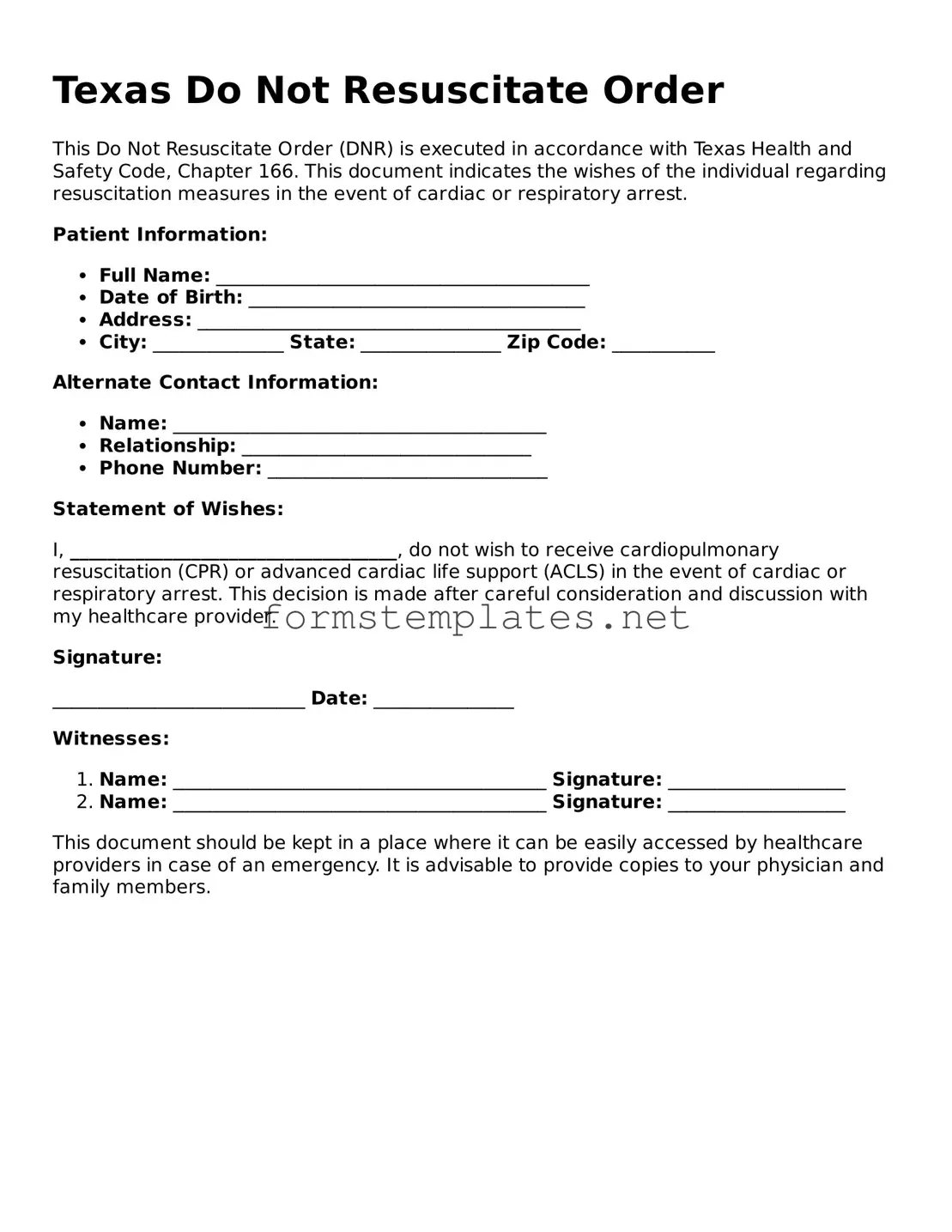A Texas Do Not Resuscitate Order (DNR) form is a legal document that allows individuals to refuse cardiopulmonary resuscitation (CPR) and other life-saving measures in the event of cardiac arrest or respiratory failure. This form is intended for patients who wish to avoid aggressive resuscitation efforts in specific medical situations.
Who can create a DNR order in Texas?
In Texas, a DNR order can be created by a competent adult or a legally authorized representative. This includes parents of minors or guardians for individuals who are unable to make their own medical decisions. It is essential that the person creating the order understands its implications.
You can obtain a Texas DNR order form from various sources, including:
-
Your healthcare provider or physician
-
Hospitals and medical facilities
-
Online through the Texas Department of State Health Services website
Make sure to fill out the form accurately and discuss it with your healthcare provider to ensure it reflects your wishes.
The Texas DNR form typically requires the following information:
-
Your full name and date of birth
-
Your signature or the signature of your authorized representative
-
The date the form was completed
-
Signature of a physician who has discussed the order with you
Completing the form correctly is crucial for it to be valid.
It is important to keep your DNR order form in a location that is easily accessible. Consider the following options:
-
With your medical records
-
In a visible place at home, such as on the refrigerator
-
With your healthcare provider
Inform your family and healthcare providers about the location of the form to ensure it can be found when needed.
Can I change or revoke my DNR order?
Yes, you can change or revoke your DNR order at any time. To do so, simply create a new DNR form that clearly states your updated wishes. Make sure to inform your healthcare providers and family members about the changes. Destroy any old forms to avoid confusion.
Will my DNR order be honored in all medical situations?
A Texas DNR order is specifically for situations involving cardiac arrest or respiratory failure. It will be honored by emergency medical services and healthcare providers in those scenarios. However, it does not apply to other medical treatments, such as pain management or comfort care.
What should I discuss with my doctor before completing a DNR order?
Before completing a DNR order, it is important to have a thorough discussion with your doctor about:
-
Your medical condition and prognosis
-
Your values and preferences regarding end-of-life care
-
The implications of refusing resuscitation
This conversation will help ensure that the DNR order accurately reflects your wishes.
Is a DNR order the same as a living will?
No, a DNR order and a living will are not the same. A living will outlines your preferences for medical treatment in various situations, including end-of-life care. A DNR order specifically addresses your wishes regarding resuscitation efforts. Both documents are important for comprehensive advance care planning.
